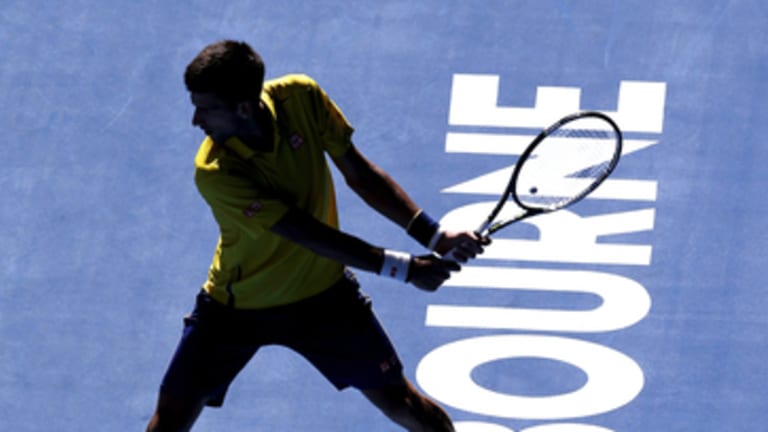“We’re all tanking in reality,” Gilles Simon joked last week after the BBC-Buzzfeed match-fixing story broke. “Novak is nothing in reality. We’re all fixing.”
First the Frenchman came up with the best line of the controversy; then, on Sunday in Rod Laver Arena, he seemed to go out and try to prove that he wasn’t kidding. Coming into their fourth-round match, Simon was 1-9 against the world No. 1, and had lost 12 of the last 13 sets they’d played; his one and only victory came eight years ago. But by the middle of the first set yesterday, all of those numbers sounded like ancient history. Simon, it appeared, had been sent to Melbourne expressly to drive Djokovic up a wall and, maybe, just maybe, end his six-year streak of reaching the quarterfinals or better at Grand Slams.
Simon set himself up as a sort of mirror to Djokovic—a reverse Simon Says. He was content to rally with Djokovic, track everything down, and send soft, low, pace-less shots up the middle of the court. But when Djokovic tried to bring some more heat, he found that Simon could fire it right back at him. And when a shoe-top passing shot was needed, Simon came up with those, too. With the Frenchman content to let the points come to him, Djokovic was the one tasked with creating openings and finishing points. On this day, he almost wasn’t up to the task.
“You can expect unforced errors when you’re playing Gilles Simon,” Djokovic said afterward, “who is one of the best counter-punchers in the tour at the moment...He likes to play long matches. He likes to play long rallies. I knew what was expecting me on the court, but I honestly didn’t expect to make this many unforced errors.”
